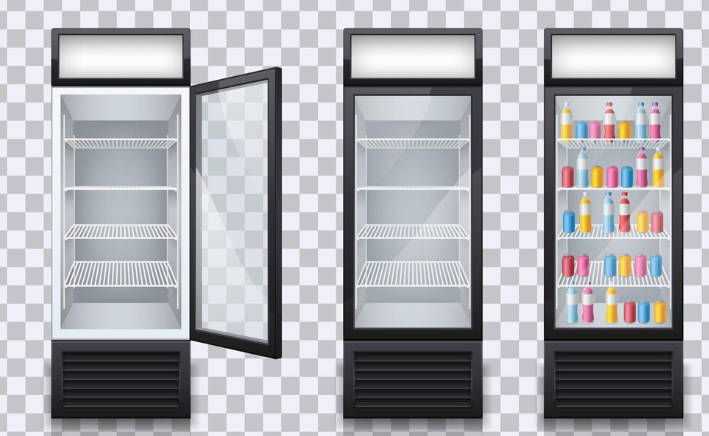
In the world of food service and retail, effective temperature control is crucial for preserving food quality and safety. Choosing the right commercial refrigeration equipment is essential for businesses ranging from restaurants to grocery stores. This article will explore the basics of commercial refrigeration, the different types available, and what to consider when making your choice.
Why Commercial Refrigeration Matters
Commercial refrigeration equipment is designed to keep food and beverages at safe temperatures, thus extending their shelf life and maintaining their freshness. Proper refrigeration is vital for compliance with health regulations and minimizing food waste. Moreover, the right equipment can improve operational efficiency and reduce energy costs, making it a smart investment for any business.
Types of Commercial Refrigeration Equipment
When it comes to commercial refrigeration, there are several key types of equipment, each serving different purposes. Understanding these options will help you select the best fit for your business needs.
1. Reach-In Refrigerators and Freezers
Reach-in units are among the most common types of commercial refrigeration equipment. They are designed for easy access and are available in various sizes and configurations. These units typically feature glass doors for visibility, making it easy for staff to find ingredients quickly. Reach-in refrigerators are ideal for restaurants and catering services, where frequent access to chilled items is necessary.
2. Walk-In Refrigerators and Freezers
For businesses with high storage needs, walk-in refrigerators and freezers provide ample space for bulk ingredients. These units are built into the structure of the building and offer easy access for multiple users. Walk-ins can be customized in size and configuration, making them suitable for large restaurants, warehouses, and grocery stores. Proper installation and insulation are crucial for maintaining efficiency and temperature control.
3. Display Refrigerators
Display refrigerators are essential for retail environments, allowing customers to view and purchase perishable items. These units are typically front-facing with glass doors, showcasing products like beverages, dairy, and deli meats. Display refrigerators not only keep products at the right temperature but also attract customers and promote sales. Choosing the right display unit can enhance your store’s aesthetic and functionality.
4. Undercounter Refrigerators
Undercounter refrigerators are compact units designed to fit beneath countertops, providing easy access to chilled items without taking up valuable floor space. These are particularly useful in busy kitchens or bars, where staff need quick access to frequently used ingredients. Undercounter units can also be paired with prep tables to streamline food preparation processes.
5. Commercial Ice Makers
Ice is a vital component in many food service establishments, whether for beverages, food preservation, or food presentation. Commercial ice makers are designed to produce large quantities of ice quickly and efficiently. They come in various styles, including undercounter and countertop models, and can be integrated with existing refrigeration systems. When selecting an ice maker, consider the type of ice (e.g., nugget, cubed, or flaked) that best suits your business needs.
Factors to Consider When Choosing Commercial Refrigeration Equipment
When investing in commercial refrigeration, several factors should guide your decision-making process:
1. Capacity and Size
Evaluate your storage needs based on your menu, customer volume, and space constraints. The right equipment should provide ample storage without overcrowding your kitchen or retail space. Consider future growth and menu changes that might require additional capacity.
2. Energy Efficiency
Energy costs can significantly impact your operating expenses. Look for energy-efficient models that are Energy Star certified, which indicate that they meet or exceed energy efficiency guidelines. Investing in energy-efficient equipment can lead to long-term savings on utility bills and a smaller environmental footprint.
3. Temperature Control and Features
Ensure that the refrigeration equipment can maintain consistent temperatures suitable for your products. Look for units with digital temperature displays, alarms for temperature fluctuations, and reliable insulation. Advanced features, such as self-defrosting and humidity control, can further enhance performance.
4. Compliance and Safety
Commercial refrigeration equipment must comply with local health regulations and safety standards. Ensure that the units you choose meet these requirements to avoid potential fines or shutdowns. Regular maintenance and servicing can help keep your equipment in compliance.
5. Budget
Determine your budget before shopping for commercial refrigeration equipment. While it might be tempting to go for the cheapest option, consider the long-term costs associated with maintenance, energy usage, and potential repairs. Investing in high-quality equipment can save you money and headaches in the future.
Conclusion
Selecting the right commercial refrigeration equipment is crucial for the success of your food service or retail business. Understanding the various types of refrigeration units and the factors that influence your decision can help you make informed choices that align with your operational needs. By investing in quality equipment, you can ensure the freshness of your products, maintain compliance with health standards, and ultimately enhance customer satisfaction. Whether you’re running a bustling restaurant or a local grocery store, the right refrigeration choices can make all the difference in your business operations.